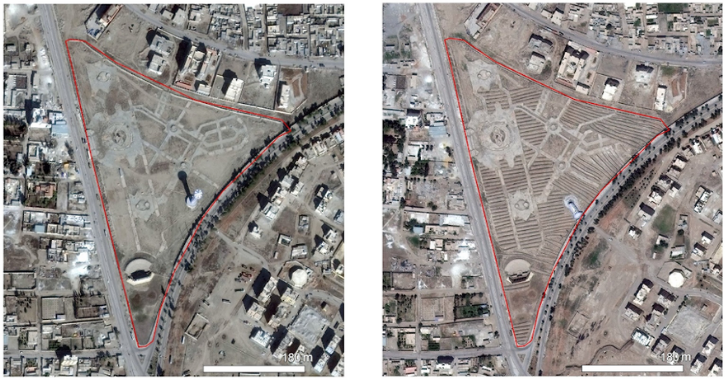Maps for humankind
University of Dayton student Aidan Mornhinweg often sits at his computer reading things that are hard to read. He reads newspaper reports of families who have sent children into human trafficking rings. He reads firsthand accounts from trafficking survivors, views websites that advertise people for trafficking purposes, and pours over cases where children were abducted or women were manipulated by their partners.
Mornhinweg reads thousands and thousands of cases of human trafficking rings in Ohio because he is mapping human trafficking routes throughout the state and the flow of trafficking in and out of the state through his job as a student employee in UD’s Human Rights Center. The hope is that the data, once mapped out, will hold information to help stop trafficking and help survivors.
“You take a moment to pull back,” he said of reading the accounts, “and you are grateful that you are at home and only reading about it, it’s not happening to you.”
Mornhinweg is a senior history major with a propensity for computer science. In the Human Rights Center, he is able to integrate those interests and use his analytical skills to support pertinent issues to humanity in a hands-on learning experience.

The map for Abolition Ohio will be another piece of information on human trafficking’s expansion around the world. Political science adjunct professor Tony Talbott, director of the anti-human trafficking organization, has been a mentor to Mornhinweg.
Mornhinweg has also been working with geosciences assistant professor Chia-Yu “Charles” Wu on the project for Abolition Ohio, as well as other initiatives for the Human Rights Center.
Wu teaches courses on geographic information systems, or GIS, which can be used to map everything from geological features to refugee migration. During the spring of his sophomore year, Mornhinweg started working with satellite images from Syria to locate mass grave sites.
Mornhinweg learned, with additional help from the computer science department, how to take satellite imagery and use it to pinpoint where the mass grave sites were. He said it was important to interpret the data correctly — sites that are not mass graves could be treacherous to excavate, and even the mass graves could be mined. The Syria Justice & Accountability Centre is using the maps he and other students created to help reunite families with the remains of their loved ones.
“This is the real consequence of war and conflict.”
“You can see the length at which people will go to commit these violations,” Mornhinweg said while discussing the presentation of his work.
“This is the real consequence of war and conflict, so on that front that was very eye opening because this is data you usually do not get your hands on.”

Projects like these are examples of how one’s passion for GIS and history intersect, Mornhinweg said. When he builds a report on how a modern societal issue has changed or stayed the same over time, he can draw from information based on the data sets he is using in his maps.
Mornhinweg has also been an intern for Riverside Research near Wright-Patterson Air Force Base, where he works with satellite imagery. He said his work on human rights issues helped him land the job, and his job allows him to continue learning skills that apply to his anti-human trafficking research.
Going forward, Mornhinweg said he would like to complete more GIS mapping projects for the Human Rights Center and continue to be involved with Abolition Ohio. Riverside Research recently offered him a part-time position.
In his future, Mornhinweg hopes to continue working with satellites and remote sensing data. He also plans to go back to school to earn a bachelor’s in GIS remote sensing and wants to remain a part of the geointelligence community.
“My college experience really turned around because of this internship with the Human Rights Center,” he said.
He is also thankful for all of his mentors and those in various organizations who helped him along the way.
“Everyone was very easy to get along with, and I felt useful, which to me was very valuable. Especially in college, that’s what you’re chasing.”